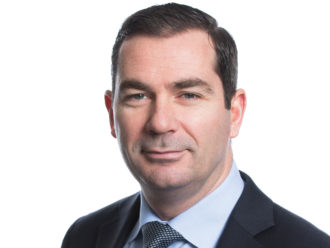Is there too much focus on costs rather than value?
The reason that I don’t believe we will have as many master trusts in the future as we have today is that for many providers a lot of those 75 basis points are taken up paying their administrator and investment manager. There will be a small profit, and I suspect it will not be enough. They do not have the scale to drive that down.
One of the things that have been foxing trustees of DC schemes is value for money. A lot of what I have seen in the way others are viewing this is that they are purely looking at price.
There has been this push that in order to tick that box we need to just look at passive investments and get it as cheap as possible. Again, if you are restricted by how much you are paying third parties because you don’t have scale then you probably are restricted to passive investments anyway.
The way that we have always approached it is not to look at all of our schemes in one go to see if there is value for money across the block. We look at each individual section because they all work differently. They are there to achieve different things. A reason why a lot of providers struggle with this concept of value for money is partly because there is no real definition of what it is. No one is willing to come up with it because they find it difficult to look at this mass of, in some cases hundreds, of employers, all of which seem to merge into one.
How do you feel SEI Master Trust brings value?
When we look to measure value, we will look at price and compare that to what is available in the market. Then we look at the services we provide. If you compare the type of section we would set up to an internet-only vanilla offering with limited or too much investment choice, then it would have a lot more engagement with the membership. We have a communications team who go out and engage with them on a regular basis. We have had various innovations come to the market, most notably the introduction of freedom and choice. So we provide members with full access to all of the new retirement flexibilities so they do not have to transfer out or do anything different. It is those additional services within the scheme that they would not get with a run-of-the mill plan. With each section we look at what has been delivered and what hasn’t. We then present that to an independent trustee to gauge if, on monetary or service, it is providing value when benchmarked against its peers. That is something that we will continue to evolve as the number of peers reduces and the information that you are able to gather on the peer group increases.
Is it difficult to recruit trustees with the right level of expertise and knowledge?
It isn’t. There is a requirement for master trusts to have a majority of independent trustees. So it is a case of finding those people. There is a fair amount of competition in the market, but for us it is about making sure that we have the right people with the right skills to manage the master trust at any given time.
Our chair of trustees is highly experienced. He is a former head of administration at what is now known as Willis Towers Watson and has served at a number of well known and large occupational pension schemes. He has that background experience which is hugely important in DC, far more so than with DB. We have another independent trustee who has an investment background, so that gives us that alternate view as well.
Historically we have also had representation from SEI on the trustee board. For four to five years it was the head of legal and compliance, so a qualified barrister who was our main point of contact with the FCA.
Then recently another member of the scheme, who is a qualified actuary and a member of the advice team, joined. So again it is someone who is a member of the scheme but has a relevant set of skills that they can bring to the trustee board.
To answer your question, if we are looking for an independent trustee then we have good relations with them from our wider business, but there is no shortage of individuals that would like to work with a master trust.
I am delighted to say that we have a really good reputation in the market place. If you compare us to Legal & General, we are not a brand that the public would recognise. But within the industry we are well-known and respected, so it is a good place to be when you are looking to bring in the best that the market has to offer from a third party perspective.
Earlier this year the Defined Contribution Investment Forum called for master trusts to report quarterly on how much a typical 25, 35 and 55-year-old would receive in retirement. Is that needed?
This is a bugbear of mine. I’m for it, but one of the things that I struggle with is that you will read a publication that says: “This is what the default fund for Company XYZ has produced”. I saw one a while ago and it had a number of master trust providers and some life companies and their performance in Q1 ranged from 11% to 12%, down to 6% to 7%. So what? What is it that you are trying to achieve? If you are talking about performance then how can you put a number of 7%? 7% for who? Because if you are in any type of target-date fund or lifestyle strategy then clearly you are going to be invested in different proportions and different ways over a period of time. You are not all going to be invested in the same way. So it will be different across those age groups. I would go a step further. If within our master trust we have different employers and we come at it from a member outcomes approach asking what is it you want to achieve? How much risk can your membership bear? Clearly there are shades in that, no member is going to stick it all on black and hope for the best. If you are looking to control and deliver a particular result at an agreed level of risk then it may well be that producing an 8% return over a period of time is exactly what you should have done. If you have actually created 12% then something has gone wrong because you were supposed to be managing in a different way with less volatility.
So there is an element of needing to look at more than just a single figure, but I would argue that is somewhat flawed because you need to understand what it is trying to achieve. Our default strategies for different clients will have achieved different things. When we carry out reviews for clients we will look across the whole of the glide path and show you that this is your benchmark. If your capital market assumptions for equities are 6%, for example, you will know that is what you expect to achieve. So what we are showing is the actual performance against all of those different age groups and what should it have been. What you are looking for is a performance that is above the benchmark across that point in time. Then also looking because you have a responsibility to say: “Well, who does that impact?” So if you have a huge chunk of people invested in growth assets then you need to focus to make sure you perform well in that area.




